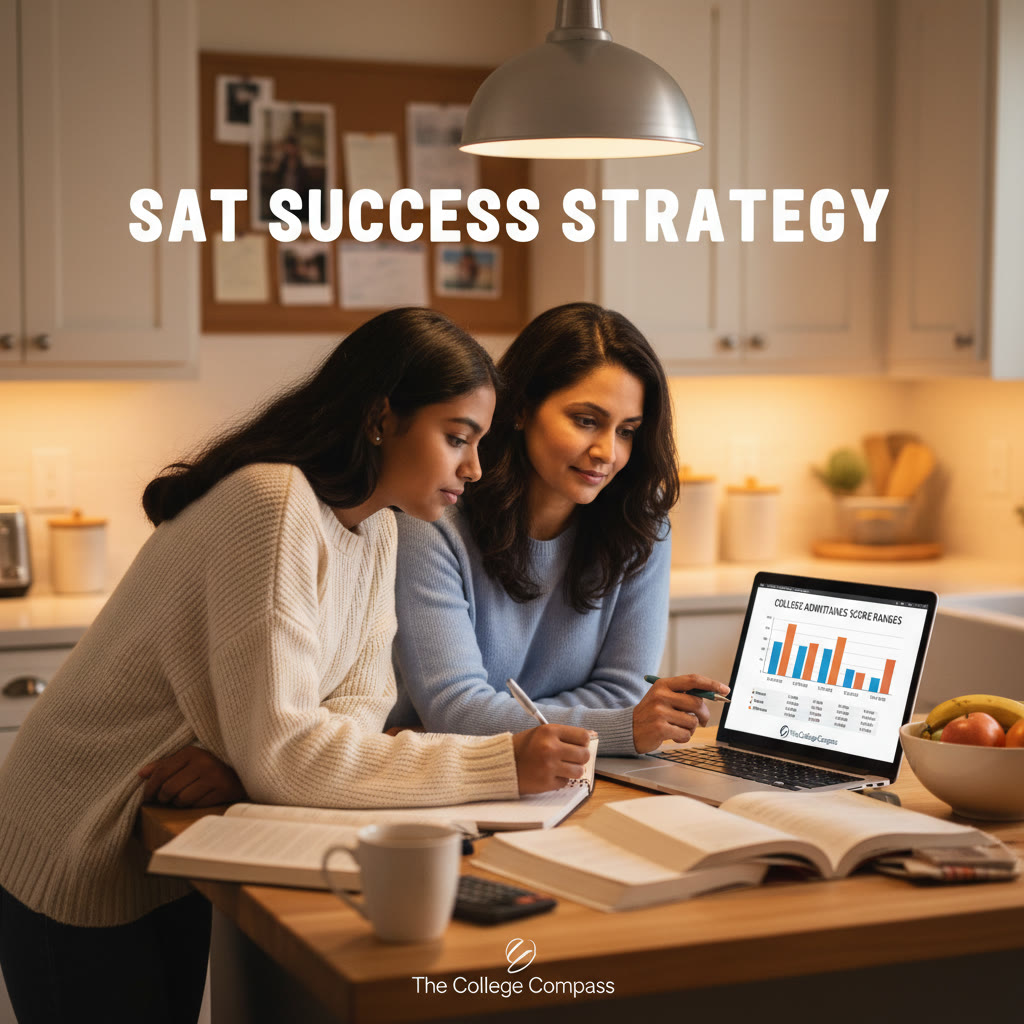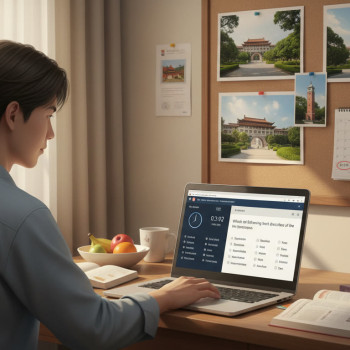Why the “average SAT” headline can be misleading — and what to read instead
If you’ve been clicking around college profiles, you’ve probably seen bold SAT ranges like 1510–1560 or 1430–1510 and felt a mix of awe and anxiety. Those numbers are useful, but they’re not a magic scoreboard that decides your fate. They’re snapshots — often showing the middle 50% of submitted scores for admitted students — and they need a little unpacking to be helpful.

What the typical published SAT range actually represents
Colleges usually publish the 25th–75th percentile SAT range for students who were admitted and chose to submit scores. That means:
- If a college’s range is 1510–1560, half of admitted students who submitted scores scored between those numbers; a quarter scored below 1510 and a quarter scored above 1560.
- Many schools report ranges only for students who submitted scores — not for the whole class — which matters at test-optional schools where top applicants sometimes omit scores.
- Ranges are descriptive, not prescriptive. They’re a snapshot of past admitted classes, not a cut-and-dry threshold that guarantees admission.
Why ranges vary so widely across the Top 100
Different missions, different applicant pools. Elite research universities typically attract applicants whose academic profiles are narrowly clustered near the top of the scoring scale. Large public universities or regional private colleges may have much wider ranges because they enroll a broader cross-section of applicants. Also, whether a school is test-optional influences the visible data: if fewer low- or mid-score applicants submit scores, the reported range may skew higher.
How to interpret SAT ranges when building your target list
Don’t let a single number determine your list. Use score ranges as one data point alongside GPA, course rigor, extracurriculars, essays, and demonstrated interest. Here’s a simple, practical way to think about ranges:
- Reach schools: Your score is below the 25th percentile. That doesn’t mean “don’t apply,” but plan to offset weaker test numbers with exceptional essays, recommendations, and demonstrated fit.
- Target schools: Your score sits within the middle 50%. You’re in a good place — keep polishing other parts of the application to maximize yield.
- Likely schools: Your score is above the 75th percentile. You’re statistically favored on test scores, but don’t be complacent — admissions still weigh everything holistically.
Real ranges: a snapshot of admitted SAT ranges at a sample of colleges
Below is a representative table showing SAT ranges as reported for admitted students at a variety of colleges across the selectivity spectrum. These examples illustrate how different colleges attract different score profiles. Remember: these are ranges for admitted students who submitted scores and can shift year to year.
| College | Typical SAT Range (25th–75th) | Admissions Context |
|---|---|---|
| Stanford University | 1510–1570 | Extremely selective; scores cluster very high |
| University of Chicago | 1510–1560 | Highly competitive, strong emphasis on academics and essays |
| University of Notre Dame | 1470–1540 | Very selective; holistic review |
| Boston University | 1430–1510 | Selective private research university |
| American University | 1300–1430 | Selective with variable yield by major |
| University of South Florida | 1230–1370 | Selective public university, large applicant pool |
| University of Alabama | 1110–1360 | Wide range—strong regional draw and scholarship programs |
| Illinois College | 930–1175 | Less selective, more inclusive range |
| University of Pittsburgh | 640–720 | Example of a mid-range public profile (scores can vary by program) |
Note: The table above mixes highly selective private universities and a range of public/regional institutions to show how much ranges can differ. For each college you’re considering, look at the most recent published range and confirm whether that range reflects submitted scores only.
How the Digital SAT changes how scores are interpreted (short answer)
The SAT’s transition to a digital format updated the test structure and scoring presentation, but the core idea for colleges remains: they want to understand academic readiness and reasoning skills. Colleges continue to publish profiles that show score ranges for admitted applicants. What changes most for students is test strategy: adaptive question formats and a shorter, more focused test mean preparation tactics evolve.
What students should focus on with the Digital SAT
- Familiarity with the digital interface to avoid technical awkwardness on test day.
- Timed practice with adaptive sections to get comfortable with how question difficulty shifts.
- Smart content review: fewer questions means every missed easy question costs more proportionally, so accuracy matters.
Using SAT ranges to make smart choices — examples and scenarios
Let’s make this concrete with three student profiles:
Profile A: Emma — aiming for top research universities
Emma has a 3.95 GPA and an SAT score of 1500. The ranges at her target schools hover around 1510–1570. Emma is just below the 25th percentile at some of her reach schools but has stellar research experience and strong recommendations. Her strategy should be to:
- Apply to a mix of reach/target/likely schools.
- Use application essays to showcase unique academic pursuits and fit.
- Consider retaking the Digital SAT after focused prep to try to move into the mid-50% range at reach schools.
Profile B: Javier — strong extracurriculars, moderate test scores
Javier scores around 1340, with a 3.8 GPA and leadership in several clubs. For selective but not ultra-elite schools (where the mid 50% is roughly 1300–1450), he’s in the middle range. He should emphasize his leadership and academic trajectory and consider targeted test prep to nudge his score upward if he wants to open more selective options.
Profile C: Priya — aiming regionally, test-optional schools in play
Priya has a 3.6 GPA and an SAT of 1180. Several good-fit colleges are test-optional. Priya has two choices: submit her score (to strengthen candidacy where it helps) or leave it out and rely on a strong application narrative, extracurriculars, and teacher recommendations. If she wants more admission leverage, a modest score improvement through targeted prep could make a big difference.
How to set a realistic SAT goal based on college ranges
Start with the 25th–75th range for your dream schools. If you’re:
- Below the 25th percentile: aim to reach at least the 25th for your target schools; if you can go above the 50th, your odds improve appreciably.
- Within the middle 50%: hold steady and invest time in essays and recommendations to boost your application’s holistic strength.
- Above the 75th percentile: consider whether your time is better invested polishing essays, portfolios, or interviews rather than chasing marginal test score gains.
Study strategies that actually move the needle
Generic advice like “study harder” is less useful than a plan with measurable milestones. Effective prep includes:
- Diagnostic testing to find strengths and weaknesses.
- Focused practice on weak question types (e.g., data interpretation, multistep algebra, evidence-based reading).
- Timed, adaptive practice that mimics the Digital SAT environment.
- Review cycles that correct misunderstanding—practice without review is practice wasted.
Where personalized tutoring helps
Many students find tailored guidance accelerates progress. Personalized 1-on-1 tutoring can provide:
- Targeted lessons for the specific question types a student misses the most.
- Adaptive plans that evolve with performance, maximizing limited prep time.
- Accountability and test-day strategy coaching—like how to manage adaptive section timing and break strategies on the Digital SAT.
Services such as Sparkl’s personalized tutoring bring these features together with expert tutors and data-driven insights so students get a study plan that fits their calendar, strengths, and college goals. For many families, that focused support is the difference between a stagnant score and steady improvement.
Beyond scores: holistic elements that top colleges weigh
Even at colleges with tight score ranges, admissions officers look at the whole applicant. Key non-test elements include:
- Course rigor and trends in grades (did you take AP/IB/dual enrollment courses and improve over time?).
- Essays that reveal character, intellectual curiosity, and fit.
- Letters of recommendation that contextualize your academic and personal strengths.
- Meaningful extracurricular engagement—depth often beats breadth.
How to use score data responsibly in conversations with your family
Score ranges are great for setting expectations, but they should not become a source of blame or pressure. Use the data to:
- Create a balanced college list with 3–6 realistic targets, 2–3 reaches, and 2–3 safeties.
- Form a study plan with checkpoints—targeted practice, one or two full-length Digital SATs, and review sessions.
- Decide whether tutoring, like Sparkl’s 1-on-1 approach, makes sense financially and strategically (many students see a measurable boost when tutoring is well-aligned with their weaknesses).
Timing: when to test and when to retake
A good timeline balances school demands with preparation. A practical approach:
- Take a diagnostic test at the end of sophomore year or start of junior year.
- Do a focused prep cycle — 8–12 weeks — and take a full-length Digital SAT in the spring of junior year.
- If needed, retake in late summer or early fall of senior year to catch final improvements before most application deadlines.
Remember that colleges see all submitted scores in many cases, but policies vary; check each college’s score-sending and superscoring policy. If retaking, do so with a clear plan for improvement rather than just another practice run.
Common mistakes students make when interpreting score ranges
- Relying on a single school’s number instead of looking at trends across several years and multiple colleges.
- Assuming test-optional means “don’t worry about scores” — sometimes a good score can strengthen an application; sometimes not submitting is fine.
- Over-preparing for rare question types and under-preparing for the consistent fundamentals (algebra, reading for evidence, grammar conventions).
Final checklist: turning ranges into action
Before you hit “submit” on an application or schedule another test, run through this quick checklist:
- Have you compared your score to the college’s 25th–75th range and adjusted expectations accordingly?
- Is your college list balanced across reach/target/likely categories?
- Do you have a study plan tied to diagnostics and timed practice, not just hours logged?
- Have you decided whether to submit scores to test-optional schools based on the strength of the number relative to the published range?
- Are you leveraging available help—teachers, counselors, or a personalized tutor like Sparkl—where it makes sense?
Parting thoughts: score ranges are tools, not verdicts
Seeing a 1500 and thinking “I’ll never get in” or seeing a 1400 and assuming “I’ll skate through” are both overreactions. Use SAT ranges as maps, not final destinations. They help you choose where to apply, how to study, and when to retake. The rest of your application — essays, choices, recommendations, and the story you tell — is where you convert numbers into opportunity.

If you want, I can help you craft a personalized target list based on your current scores and goals, sketch a study calendar for the Digital SAT, or outline how a short tutoring plan could raise your score by a realistic amount. Just tell me your current SAT diagnostic, GPA, and a few dream schools — we’ll make a plan that feels achievable and smart.



















No Comments
Leave a comment Cancel